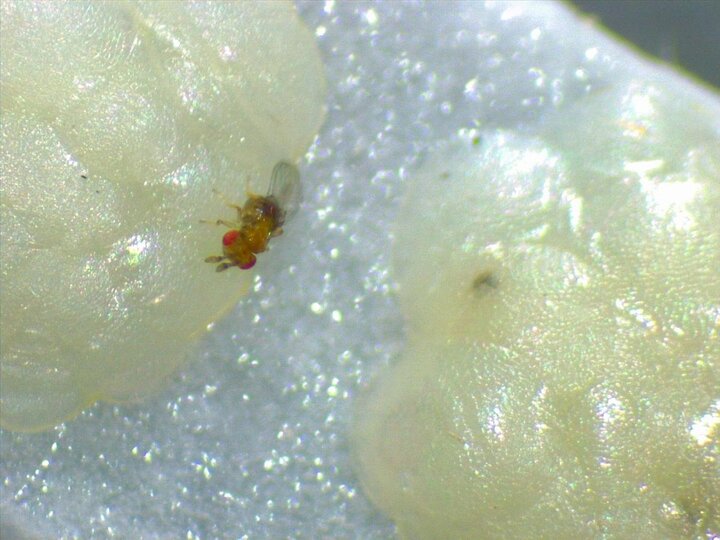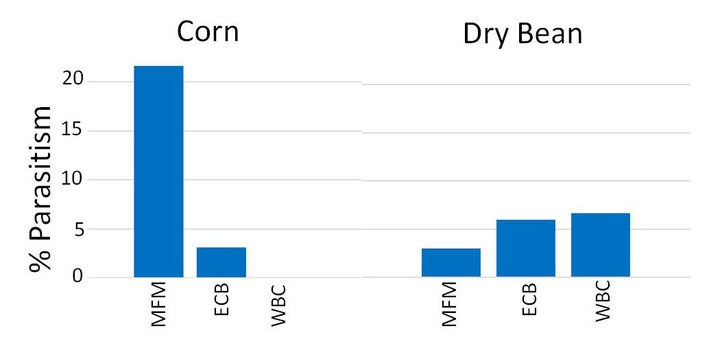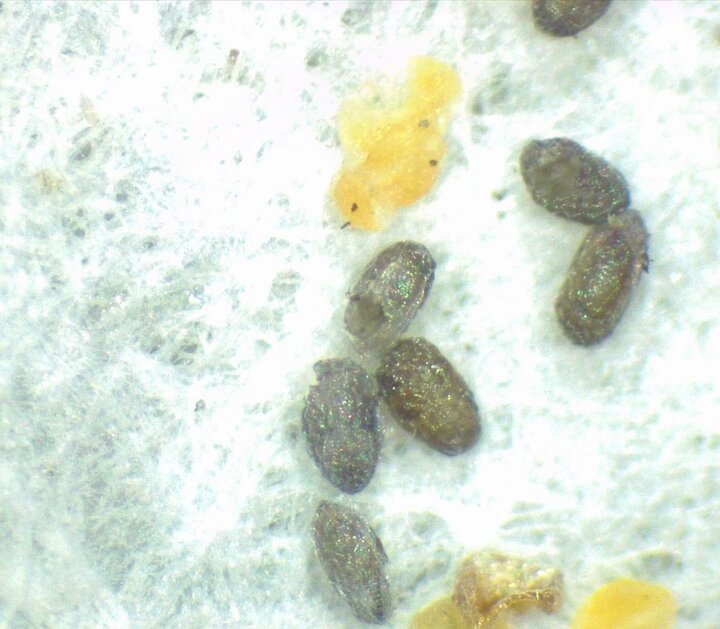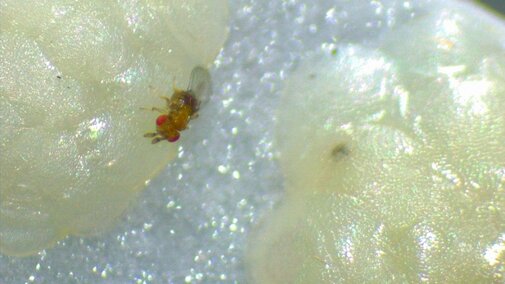The western bean cutworm is a pest of corn and dry bean. Typically, control is achieved by pyrethroids or transgenic traits. However, control with pyrethroids may prove difficult and transgenic traits are not available for dry bean. Biological control may prove to be a useful tool for growers of both crops.
Biological control is the use of living organisms to control pests. This can take several forms. In augmentative biological control we are releasing a Trichogramma wasps in a “biopesticide” that is designed to knock down populations of western bean cutworms to a more tolerable level. In conservation biological control we are providing an environment that is more conducive to naturally occurring organisms that will keep the western bean cutworm at tolerable levels.
An ideal candidate for augmentative biological control Trichogramma ostriniae. Trichogramma wasps are ideal because:
- They are easy to produce in mass numbers
- They kill the pest before it causes damage

This species has been shown to primarily control the European corn borer and a couple pests that do not occur in the U.S. (Table 1).
| Crop | Pest | Location |
|---|---|---|
| Corn | Asian Corn borer | China |
| Sugarcane | sugarcane grey borer | Taiwan |
| sweet corn | European corn borer | New York |
| field corn | European corn borer | New York |
| sweet pepper | European corn borer | Virginia |
| Sweet pepper | European corn borer | Pennsylvania |
| Potato | European corn borer | Virginia |
| Potato | European corn borer | Maine |
Pilot studies at the Panhandle research and Extension center have shown that T. ostriniae is capable of parasitizing the western bean cutworm. Field releases have shown that this species will disperse into both corn and dry bean fields. However, parasitism from this species has proved disappointing for western Nebraska. This could be due to our dry climate. So, in the future we may test other species of Trichogramma.

Typically, releases are made from cards deployed at the center or spread throughout the field. However, this can be time consuming. Since herbicides are typically applied in bean and fungicides in corn near to the time of western bean cutworm flight, we are testing the possibility of making a release via tank mix. Results from this trial will likely carry over to other species of Trichogramma as well.



A method of conservation biological control that we are testing is a wheat-dry bean relay crop. A relay crop is where a second crop is planted into an established crop prior to harvest. Advantages of this system may include:
- Reduced nitrate leaching
- Reduced erosion
- Increased harvestability
- Improved efficiency
- Improved weed control
- Improved biological control
Biological control may be enhanced through early establishment of natural enemies within dry bean even prior to the emergence of the dry bean crop.
Biological control may be enhanced through early establishment of natural enemies within dry bean even prior to the emergence of the dry bean crop. We are currently in the initial stages of studying this phenomenon.
Summary:
We are carrying out studies to assess the feasibility of biological control of the western bean cutworm in corn and dry bean. For augmentative biological control, we are assessing the species Trichogramma ostriniae. Including a new release method. For conservation biological control, we are assessing a novel crop combination that may have benefits to growers beyond just biological control.

